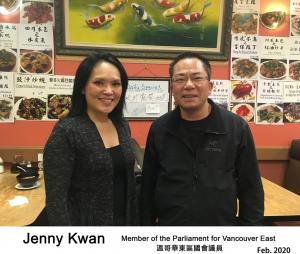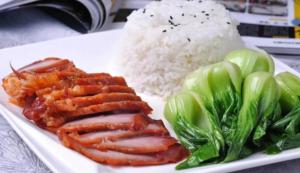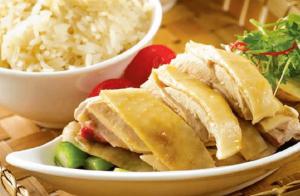Chinese Lunch Delivery Vancouver | Chinese Restaurant Burnaby
BURNABY, BC, CANADA, April 13, 2022 /EINPresswire.com/ -- BURNABY, BC, CANADA, April 13, James On Hastings Chinese Restaurant prepared to deliver traditional Cantonese food lunch boxes to all offices in Brentwood and Metrotown areas in Burnaby.
ORIGIN: WHY Chow Mein is Important To Cantonese
Wonton noodles are divided into two types: Xirong and Darong. Such a delicate name is actually taken from the Cantonese homonyms of "Xiaoyong" and "Dayong", which means small bowl and big bowl. Generally, the default option for ordering wonton noodles is fine, and it is also very skillful to place wonton noodles: the spoon should be at the bottom, the wonton should be on the spoon, and the noodles should be covered on top of all the ingredients. The intention is that the wontons will not leak out and become dry, and the noodles will not become soft because they are soaked in the soup. So the first step already has the option of adding and subtracting points from the appearance.
According to research, wonton noodles first appeared in the late Qing Dynasty and early Republic of China, in the Xiguan area of Guangzhou. According to legend, it was introduced from Hunan during the Tongzhi period. It was originally used for worship. Until the Song Dynasty, every winter solstice, the shops in towns and towns were closed, and each family wrapped wontons to worship their ancestors, and all the parents and children shared the wontons as a sacrifice. Rich people have a plate of sacrificial wontons with more than ten kinds of fillings, which are called "huntons with 100 flavors".
After the Southern Song Dynasty, wontons were introduced into the market. In the early days, most of them were carried around by hawkers on their shoulders. Because hawkers usually go to residential areas to sell in the evening to meet the habit of supper, hawkers will beat the bamboo boards with small wooden sticks to sell, making a sound of "Dude, Tuck" to attract the public's attention. Later, some successful and wealthy hawkers set up shop to operate, or even sell raw porridge . After decades, it has become the old wanton noodle shop it is today.
NickName Of Lo-Mein: Chinese Restaurant Burnaby @ James
Wonton noodles in Guangdong are called "Rong" (Cantonese pronunciation jung2 "Chong") in the industry, which is said to be the abbreviation of "Furong noodles". The "hibiscus noodles" originated from "the hibiscus is like a face and a willow-like an eyebrow" in the poem "Song of Everlasting Regret" by Bai Juyi, a poet in the Tang Dynasty . At that time, scholars compared "hibiscus" to noodles. Another said: Cantonese people used to call scrambled eggs scrambled hibiscus eggs , so Cantonese people called their unique shui egg noodles as hibiscus noodles, which is a habitual practice of beautifying and raising their value.
Wonton noodles are further divided into "fine glutinous rice", "Zhong Rong" and "Da Rong": "Xi Rong" is a one-two (about 38 grams) cake with four wontons; "Zhong Rong" is a half-face cake with six wontons; "Da Rong" "It is two flatbreads with eight wontons . It is also said that "Rong" should be "Embrace". It is said that the early wonton noodles were relatively small. In winter, the lower class held the small bowl (ie "Embrace") in their arms, so that they could keep their stomachs full and warm, so it is also called "Small embrace" ("fine" means small).
Traditionally, in order to distinguish it from the wonton noodles that were introduced from other provinces, it is usually called “Wonton noodles” from Guangdong in the text—shrimp, pork, wonton, water, egg, and bamboo noodles (yellow noodles), while those from other provinces are wonton noodles. Noodles---Vegetable and meat ravioli without water and egg-free noodles (white noodles).
How To Make: Cantonese Restaurant Burnaby BC
Wanton noodles are generally made of wonton noodles, which are divided into soup noodles and noodles: Soup Noodles: It is based on boiled noodles (traditionally fished with a little lard, but now there is no more), then add the boiled wontons, and then serve with the old fire soup base (with soybean sprouts, pork bones, shrimp heads and shrimp shells, Grilled dried fish as soup), add a little chives at the end and cut into sections. Lo Mein: Usually, the noodles are boiled and left with a little dry water, then put on a plate and then put wontons. With green vegetables, it becomes wonton lo mein.
There are also oyster sauce wonton lo mein, ginger and onion wonton lo mein, and shrimp wonton lo mein. ...(There are also Soy Sauce King Lo Mian, Ginger Onion Lo Mian, Guangdong Fried Sauce Lo Mian, Cantonese Dumpling Lo Mian, Pork Knuckle Lo Mian, Beef Brisket Lo Mian and Shrimp Lo Mian...etc).
At James on Hastings, we provide Chinese Lunch Delivery in Burnaby, BC

ORIGIN: WHY Chow Mein is Important To Cantonese
Wonton noodles are divided into two types: Xirong and Darong. Such a delicate name is actually taken from the Cantonese homonyms of "Xiaoyong" and "Dayong", which means small bowl and big bowl. Generally, the default option for ordering wonton noodles is fine, and it is also very skillful to place wonton noodles: the spoon should be at the bottom, the wonton should be on the spoon, and the noodles should be covered on top of all the ingredients. The intention is that the wontons will not leak out and become dry, and the noodles will not become soft because they are soaked in the soup. So the first step already has the option of adding and subtracting points from the appearance.
According to research, wonton noodles first appeared in the late Qing Dynasty and early Republic of China, in the Xiguan area of Guangzhou. According to legend, it was introduced from Hunan during the Tongzhi period. It was originally used for worship. Until the Song Dynasty, every winter solstice, the shops in towns and towns were closed, and each family wrapped wontons to worship their ancestors, and all the parents and children shared the wontons as a sacrifice. Rich people have a plate of sacrificial wontons with more than ten kinds of fillings, which are called "huntons with 100 flavors".
After the Southern Song Dynasty, wontons were introduced into the market. In the early days, most of them were carried around by hawkers on their shoulders. Because hawkers usually go to residential areas to sell in the evening to meet the habit of supper, hawkers will beat the bamboo boards with small wooden sticks to sell, making a sound of "Dude, Tuck" to attract the public's attention. Later, some successful and wealthy hawkers set up shop to operate, or even sell raw porridge . After decades, it has become the old wanton noodle shop it is today.
NickName Of Lo-Mein: Chinese Restaurant Burnaby @ James
Wonton noodles in Guangdong are called "Rong" (Cantonese pronunciation jung2 "Chong") in the industry, which is said to be the abbreviation of "Furong noodles". The "hibiscus noodles" originated from "the hibiscus is like a face and a willow-like an eyebrow" in the poem "Song of Everlasting Regret" by Bai Juyi, a poet in the Tang Dynasty . At that time, scholars compared "hibiscus" to noodles. Another said: Cantonese people used to call scrambled eggs scrambled hibiscus eggs , so Cantonese people called their unique shui egg noodles as hibiscus noodles, which is a habitual practice of beautifying and raising their value.
Wonton noodles are further divided into "fine glutinous rice", "Zhong Rong" and "Da Rong": "Xi Rong" is a one-two (about 38 grams) cake with four wontons; "Zhong Rong" is a half-face cake with six wontons; "Da Rong" "It is two flatbreads with eight wontons . It is also said that "Rong" should be "Embrace". It is said that the early wonton noodles were relatively small. In winter, the lower class held the small bowl (ie "Embrace") in their arms, so that they could keep their stomachs full and warm, so it is also called "Small embrace" ("fine" means small).
Traditionally, in order to distinguish it from the wonton noodles that were introduced from other provinces, it is usually called “Wonton noodles” from Guangdong in the text—shrimp, pork, wonton, water, egg, and bamboo noodles (yellow noodles), while those from other provinces are wonton noodles. Noodles---Vegetable and meat ravioli without water and egg-free noodles (white noodles).
How To Make: Cantonese Restaurant Burnaby BC
Wanton noodles are generally made of wonton noodles, which are divided into soup noodles and noodles: Soup Noodles: It is based on boiled noodles (traditionally fished with a little lard, but now there is no more), then add the boiled wontons, and then serve with the old fire soup base (with soybean sprouts, pork bones, shrimp heads and shrimp shells, Grilled dried fish as soup), add a little chives at the end and cut into sections. Lo Mein: Usually, the noodles are boiled and left with a little dry water, then put on a plate and then put wontons. With green vegetables, it becomes wonton lo mein.
There are also oyster sauce wonton lo mein, ginger and onion wonton lo mein, and shrimp wonton lo mein. ...(There are also Soy Sauce King Lo Mian, Ginger Onion Lo Mian, Guangdong Fried Sauce Lo Mian, Cantonese Dumpling Lo Mian, Pork Knuckle Lo Mian, Beef Brisket Lo Mian and Shrimp Lo Mian...etc).
At James on Hastings, we provide Chinese Lunch Delivery in Burnaby, BC
James On Hastings Chinese Restaurant
James On Hastings Chinese Restaurant
+1 604-255-3188
email us here
Legal Disclaimer:
EIN Presswire provides this news content "as is" without warranty of any kind. We do not accept any responsibility or liability for the accuracy, content, images, videos, licenses, completeness, legality, or reliability of the information contained in this article. If you have any complaints or copyright issues related to this article, kindly contact the author above.



